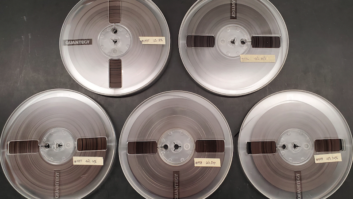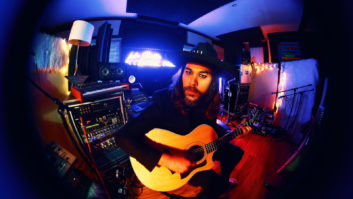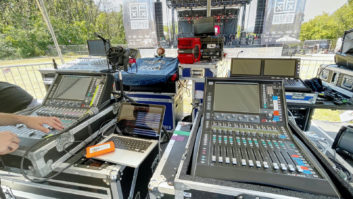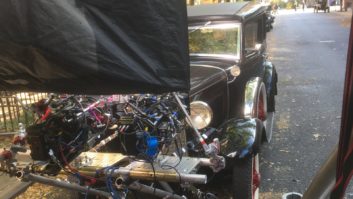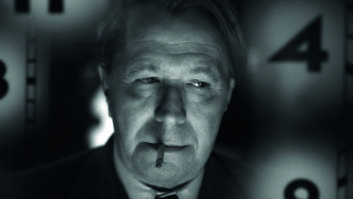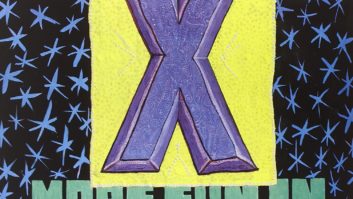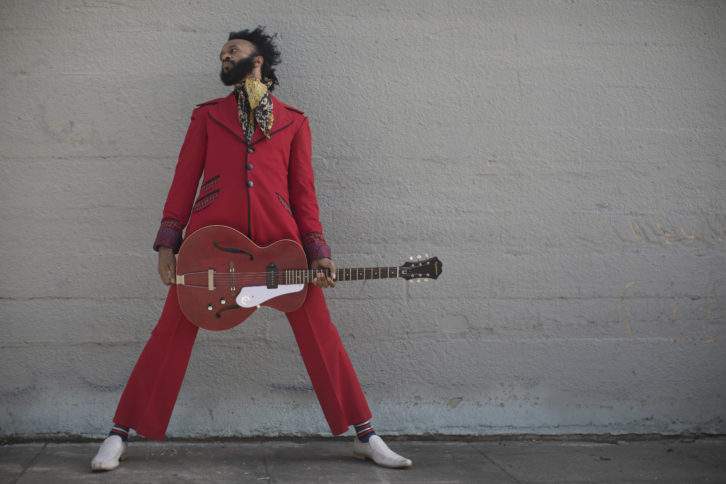
Bay Area-based musician and co-founder of the Blanket the Homeless project Ken Newman was working with artist/producer Scott Mickelson when the idea struck to make this record.
“I had been working on my album Dreaming of Guns for about a year-and-a-half,” Newman says. “Scott had great success with a compilation called After the Fire that he produced to support the victims of the Northern California devastation. He proposed the idea of doing a similar effort to support Blanket the Homeless.” Blanket the Homeless provides care packages and distributes them on the streets of San Francisco.

“The contents change depending on season,” Newman explains, “but basically we purchase emergency blankets, socks, gloves, winter hats, and hygiene and first-aid supplies. We also include a resource guide of free food, shelter, child care and psychological services, and there’s a Clif Bar in each package. The Clif Bar company has been incredibly generous.”
Mickelson took on the task of lining up artists for a Blanket the Homeless benefit album. “At first, I was not really getting much of a response,” he says, “but then Phil Green, who manages Fantastic Negrito, said they would love to be part of it. Fantastic Negrito couldn’t come in to record, but he would give us a track. Once Fantastic Negrito was onboard, then other artists wanted to be on it, and it came together pretty quickly.”
Fantastic Negrito sent Mickelson the funk song “Working Poor” from the artist’s Grammy-winning release The Last Days of Oakland. On an album that’s uncompromising in its indictment of economic injustice, “Working Poor” is one of the most brutal tracks (“sip fancy coffee/step over body…I keep on knocking but I can’t get in”).
“I chose ‘Working Poor’ because it feels like this is what we are accepting,” Fantastic Negrito says. “I walk down San Pablo Avenue [in Oakland] every day from my studio to downtown. I get to witness up close the devastation of displaced people. Human beings in the greatest country in the world living under freeway overpasses, eating with rats, braving the elements. We are all one or two paychecks from joining them.”
With “Working Poor” in his pocket, Mickelson contributed his own song to the album (“Odd Man Out”), as did Newman (“We Should Do This Again”) and recruited a dozen more artists, including Stone Foxes, Tim Bluhm of the Mother Hips, Con Brio, Whiskerman and others. Most artists wrote new songs for the record, and 13 of the 15 album tracks were recorded and produced by Mickelson in his Logic-based personal studio.
“It’s a hybrid setup,” Mickelson says. “I use plug-ins, but I also have a lot of 500 Series pieces, including an SSL VHD mic pre, a Rupert Neve Designs 551, Vintech X73i and Elysia 500 Series processors, and I use Lynx 16-track Thunderbolt converters.”
Mickelson’s studio now includes a large live room that’s wired to his 10×10-foot control room, but when he was recording these tracks, it was just the control room and a small iso booth. Most of the artists worked side-by-side with him in the control room. One of the more complex songs to capture was Whiskerman’s rock track, “U.S.M.E.” (“United Souls of Mother Earth”).
“They’re a great live band, led by a very talented guy named Graham Patzner,” Mickelson says. “But I really was not set up to record everybody live; I only had eight inputs, so Graham did a scratch guitar while the bass player was in with the drummer, and the drummer played live. That’s how we laid the basics, and everything else was added on top of that, including a very percussive violin part and keys on a Nord. We also had two different electric guitars—one with slide—so there was a lot of information. Fortunately, they were very open-minded to editing down the length of the song and simplifying the arrangement, because it started out somewhat cluttered.
“One thing I had to keep in the back of my mind was, on this project, many of these people had never worked with me,” he continues. “You have to build trust and communication, so it was especially important for me to be diplomatic and not get in the way of the vibe and the flow of how the musicians were playing.”
On Dan Schwartz’s drums, Mickelson used two Royer R-10s on overheads, an AKG D112 on kick, a Shure SM57 on snare top and an AKG C414 on snare bottom, and a Rode K2 for the room. Will Lawrence’s bass was taken direct, and Charles Lloyd’s and Jeremy Lyon’s electric guitars were recorded through a ribbon and a large-condenser: “I usually combine a Royer R-10 with a 57 or SM7 and blend those, and for a room mic sometimes I use a Telefunken Copperhead. On acoustic guitars, I almost always use a Peluso 2247. I loved that Peluso for Graham’s vocals, too, into my SSL VHD pre, into the Neve Designs 551 and a Retro Instruments Doublewide.”
At the opposite end of the production spectrum was Tim Bluhm’s session for the acoustic song “Clean Me Up.” “That was the most intimate song we did,” Mickelson says. “He was the only one who came in and I just set up a couple of mics in the control room—the Peluso and a small condenser, the Josephson C42—and he did a couple of takes. The Josephson is very detailed and precise, whereas the Peluso has a much bigger and warmer sound, and it adds a bit of character to the recording, as well as captures more of the room. It’s a beautiful song, a beautiful performance.”
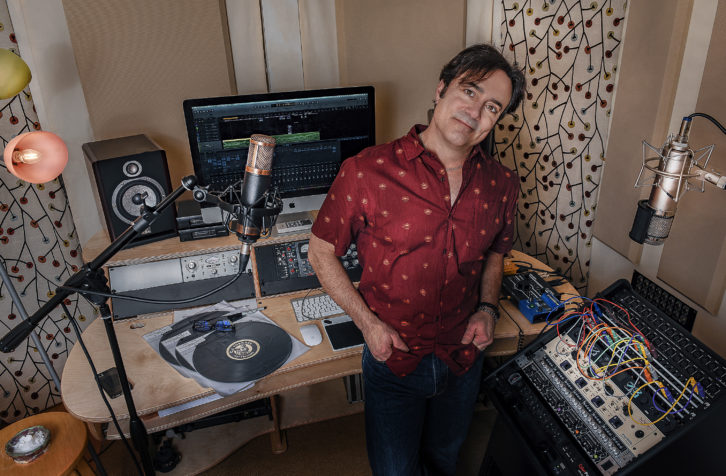
Mickelson mixed the tracks in Logic. His main reverb was Audio Ease Altiverb, and he employed the UAD Ampex ATR102 tape emulation plug-in. “I put that and an SSL K-bus compressor on the master bus,” he says. “After I get the whole mix going but before I start bouncing it down, I go out again through the Elysia Xfilter stereo 500 Series EQ and put that through a Charter Oak SCL1 stereo compressor, and that really gives the mix a bigger, warmer sound without coloring it.”
“It’s a stunning piece of work,” Newman says. “Scott is an incredibly talented producer, musician and songwriter. And as talented as he is, he is equally compassionate. Even though my company covered some of the production costs, the work Scott did, in terms of acquiring artists, recording and mixing tracks, dealing with the mastering company, managing the artwork, finding a publicist, dealing with venues for the release concert… It was a Herculean task, and one that he largely did without compensation. There are few people I know who would commit that much time and effort and talent.”
Newman also has some encouraging words for other artists and producers who want to make a difference: “Find something that you’re passionate about. Get together with others in your field,” he says. “Plan a breakfast meet and brainstorm. Throw out ideas. Don’t wait for the next big project to come your way; create the project.”


